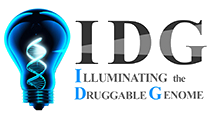Drug results: 21
| benzalkonium | A mixture of alkylbenzyldimethylammonium compounds. It is a bactericidal quaternary ammonium detergent used topically in medicaments, deodorants, mouthwashes, as a surgical antiseptic, and as a as preservative and emulsifier in drugs and cosmetics. |
|
| sodium fluoride | A source of inorganic fluoride which is used topically to prevent dental caries. | |
| benzocaine | A surface anesthetic that acts by preventing transmission of impulses along NERVE FIBERS and at NERVE ENDINGS. |
|
| triclosan | A diphenyl ether derivative used in cosmetics and toilet soaps as an antiseptic. It has some bacteriostatic and fungistatic action. |
|
| aluminium chlorohydrate | antiperspirant; structure | |
| eugenol | A cinnamate derivative of the shikamate pathway found in CLOVE OIL and other PLANTS. |
|
| salicylic acid | A compound obtained from the bark of the white willow and wintergreen leaves. It has bacteriostatic, fungicidal, and keratolytic actions. |
|
| benzethonium | Bactericidal cationic quaternary ammonium surfactant used as a topical anti-infective agent. It is an ingredient in medicaments, deodorants, mouthwashes, etc., and is used to disinfect apparatus, etc., in the food processing and pharmaceutical industries, in surgery, and also as a preservative. The compound is toxic orally as a result of neuromuscular blockade. |
|
| titanium dioxide | used medically as protectant against externally caused irritation & sunlight; high concentrations of dust may cause irritation to respiratory tract; RN given refers to titanium oxide (TiO2); structure |
|
| octocrylene | ingredient in sunscreens and cosmetics |
|
| octinoxate | a UV filter compound |
|
| isopropanol | An isomer of 1-PROPANOL. It is a colorless liquid having disinfectant properties. It is used in the manufacture of acetone and its derivatives and as a solvent. Topically, it is used as an antiseptic. |
|
| epinephrine | The active sympathomimetic hormone from the ADRENAL MEDULLA. It stimulates both the alpha- and beta- adrenergic systems, causes systemic VASOCONSTRICTION and gastrointestinal relaxation, stimulates the HEART, and dilates BRONCHI and cerebral vessels. It is used in ASTHMA and CARDIAC FAILURE and to delay absorption of local ANESTHETICS. |
|
| mepyramine | A histamine H1 antagonist. It has mild hypnotic properties and some local anesthetic action and is used for allergies (including skin eruptions) both parenterally and locally. It is a common ingredient of cold remedies. |
|
| ethanol | A clear, colorless liquid rapidly absorbed from the gastrointestinal tract and distributed throughout the body. It has bactericidal activity and is used often as a topical disinfectant. It is widely used as a solvent and preservative in pharmaceutical preparations as well as serving as the primary ingredient in ALCOHOLIC BEVERAGES. |
|
| zinc oxide | A mild astringent and topical protectant with some antiseptic action. It is also used in bandages, pastes, ointments, dental cements, and as a sunblock. |
|
| oxybenzone |
|
|
| homosalate | cpd not photoallergenic |
|
| octisalate |
|
|
| clofedanol |
|
|
| infliximab | Infliximab products neutralize the biological activity of TNF-alpha by binding with high affinity to the soluble and transmembrane forms of TNF-alpha and inhibit binding of TNF-alpha with its receptors. Infliximab products do not neutralize TNF-beta (lymphotoxin-alpha), a related cytokine that utilizes the same receptors as TNF-alpha. Biological activities attributed to TNF-alpha include: induction of pro-inflammatory cytokines such as interleukins (IL) 1 and 6, enhancement of leukocyte migration by increasing endothelial layer permeability and expression of adhesion molecules by endothelial cells and leukocytes, activation of neutrophil and eosinophil functional activity, induction of acute phase reactants and other liver proteins, as well as tissue degrading enzymes produced by synoviocytes and/or chondrocytes. Cells expressing transmembrane TNF-alpha bound by infliximab products can be lysed in vitro or in vivo. Infliximab products inhibit the functional activity of TNF-alpha in a wide variety of in vitro bioassays utilizing human fibroblasts, endothelial cells, neutrophils, B and T-lymphocytes and epithelial cells. The relationship of these biological response markers to the mechanism(s) by which infliximab products exert their clinical effects is unknown. Anti-TNF-alpha antibodies reduce disease activity in the cotton-top tamarin colitis model, and decrease synovitis and joint erosions in a murine model of collagen-induced arthritis. Infliximab products prevent disease in transgenic mice that develop polyarthritis as a result of constitutive expression of human TNF-alpha, and when administered after disease onset, allow eroded joints to heal. |



